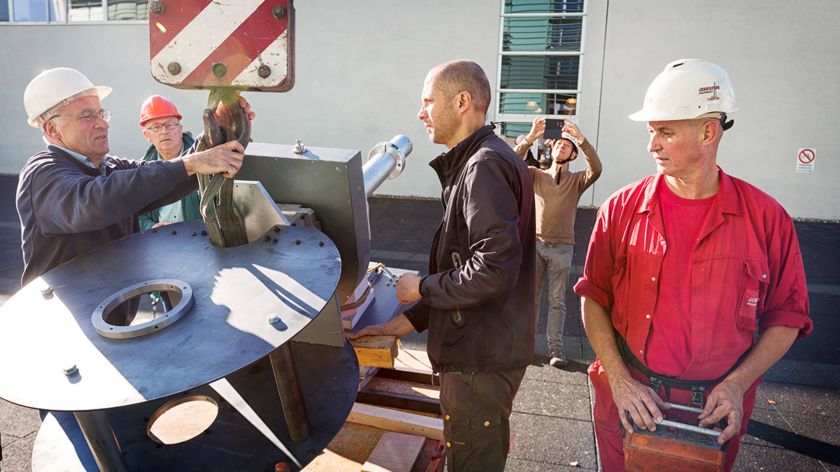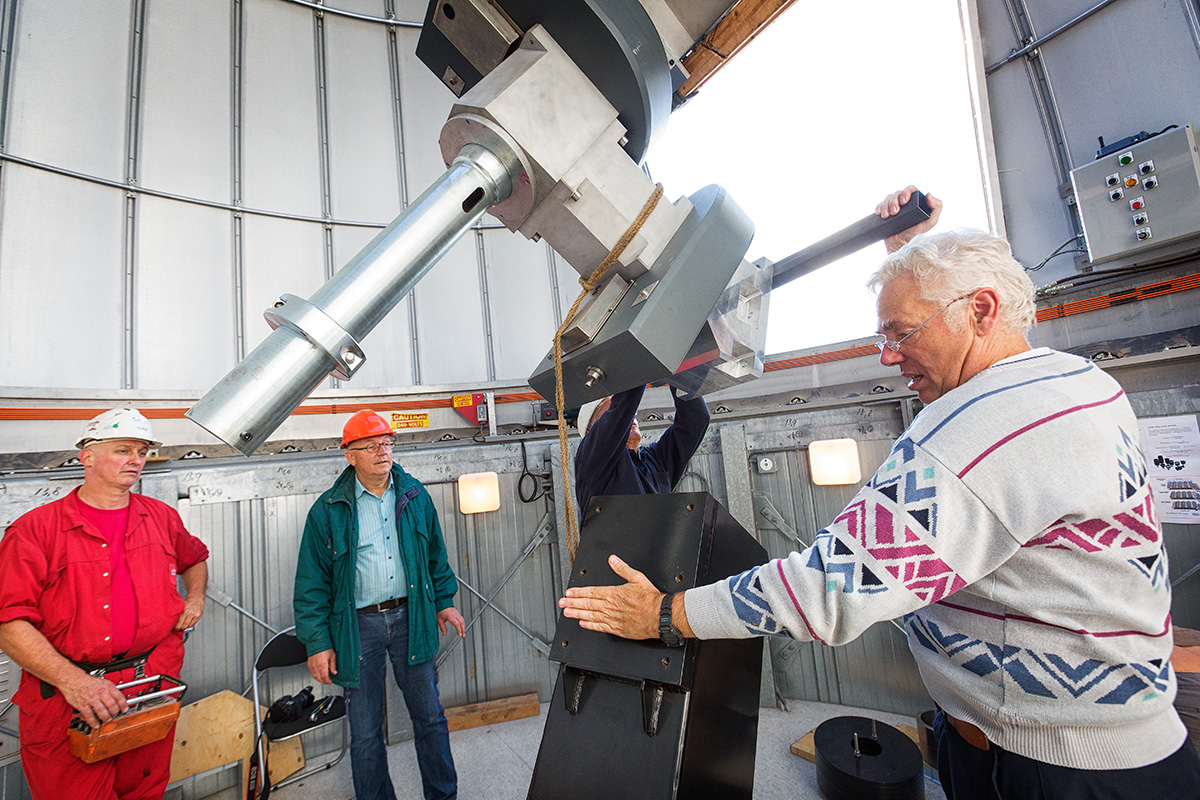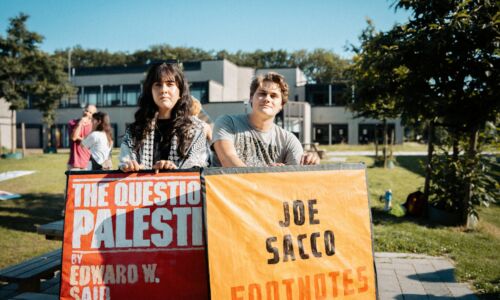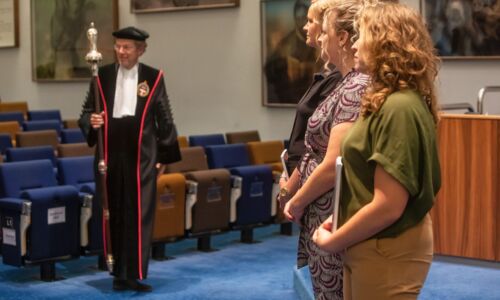Radboud telescope on the roof
-
 MeerLICHT wordt het Huygensgebouw opgetakeld. Foto: Dick van Aalst
MeerLICHT wordt het Huygensgebouw opgetakeld. Foto: Dick van Aalst
A towering crane has put MeerLICHT, a telescope designed in Nijmegen, on the roof of Huygens building today. In the upcoming weeks, the telescope, that will go to South Africa soon, is tested here on campus.
Men with white helmets stop passersby who try to reach the side entrance of Huygens building from Linnaeus building. People look up inquiringly. A big crane on campus is not a sight people see every day. A car driver coming from the Huygens parking almost hits it, trying to get to Heyendaalseweg.
The crane lifts big pieces of metal to the roof, where two star domes are located. Bit by bit, MeerLICHT, an optical telescope designed in Nijmegen, is assembled. The parts of the machine have been constructed in several European countries and the United States.
Hungary
In six months, MeerLICHT will be in South Africa, at 400 kilometers North-East of Capetown. Together with the precursor of the most sensitive radio telescope in the world, MeerKAT, it will search parts of the universe that are barely visible from the Northern Hemisphere. The value of this is the combination of an optical telescope (MeerLICHT) and an radio telescope. Astronomers expect that the two telescopes together will be able to map the changes in the universe much better than is possible right now.
Astronomy professor Paul Groot came up with this plan four years ago, together with a colleague from Capetown. In collaboration with Steven Bloemen, who got his PhD at Leuven university, coordinates the project. They flew across the whole world to visit companies that were able to make parts. Now, they are looking up expectantly to see the crane lifting the parts up. Like the lower part with built-in engines that enables the telescope to turn, and is made in Hungary.
‘We opened a bottle of champagne. Or two’
The most important part of the telescope, with the mirrors and the camera, has been assembled in Dwingeloo. Groot and Bloemen were there recently, when this part was tested. Groot: ‘When we aimed it at the Pole Star, it immediately gave a good image. At that moment, you do cheer a bit. We also opened a bottle of champagne. Or two.’
Employees of the Techno Centre at the science faculty and volunteers of the Astronomical Circle Nijmegen have prepared the lifting operation on campus and are making sure everything is going well. In the upcoming weeks, MeerLICHT will be tested here. First with a dummy telescope and, if everything goes well, soon with the real one. ‘So that we do not get any surprises in South Africa’, says Bloemen. On a mountain in a desert, it is not easy to get the parts needed when something goes wrong, he explains. ‘You are five hours away from Capetown there. Even if you miss just a cable, there will be no electronics store to get it.’ If everything goes according to plan, the telescope will be shipped to South Africa at the end of December.
MeerLICHT is a prototype for telescopes that will be built in Chile in a couple of years, known as the BlackGEM telescopes. Bloemen: ‘We will draw conclusions from working with this telescope, and make three more next year, that will go to Chile in 2018, to find for sources of gravitational waves.’




